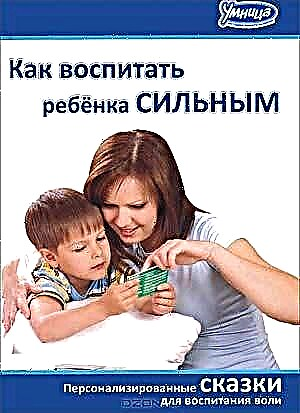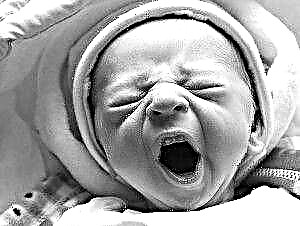
The nervous system of a newly born person is still immature. It will improve over the years. It is not surprising that caring parents gaze intently at their baby - does he have any deviations?
Does your baby get restless before bedtime? Sometimes the chin trembles, arms and legs twitch, the baby spits up abundantly and often, lags behind in development from peers? Does the toddler have a delay in speech development or does he not want to sit down and walk on the average? All these symptoms can be a sign of both natural immaturity of the nervous system for the crumbs, and a serious illness.

When the question arises, as they say, edge-on, parents and pediatricians have no time to wait whether the alarming symptoms will pass over time.
After all, the older the child, the more difficult it is to correct deviations caused by neurological pathologies. In this situation, children are prescribed nootropic drugs. Do not be afraid - according to statistics, they are discharged to every third baby.
What it is?
Nootropics are neurometabolic stimulants. Simply put, drugs that actively affect the higher mental functions of the brain, improve blood circulation and the functioning of the nervous system, and stimulate metabolic processes in nerve tissues. In the international classification, nootropics do not have a separate group, they were combined with psychostimulants. But this is also not a cause for concern.
Act
Nootropic action is based on several processes. They improve the energy state of nerve cells (neurons), accelerate the processes taking place in the central nervous system, saturate the brain with oxygen, strengthen the membranes of nerve cells, and increase the speed of impulses in the brain. As a result, metabolic processes in the brain are significantly improved, memory "grows stronger", perception "revives". Nootropics have a positive effect on the mechanisms of thinking and increase intellectual abilities. It is for this that nootropics got their second unofficial name - "cognition stimulants".

Nootropic drugs are of various classifications, there are more than 20 types in total. There are over a hundred titles.
Indications for use
Nootropic drugs are prescribed to children for the following diseases and conditions:
- Lag in the development of the child's psyche,
- Delayed speech development
- The consequences of intrauterine suffering of the baby, during which the central nervous system was affected,
- Head trauma (concussion, TBI),
- Attention deficit disorder
- Various forms of mental retardation
- Cerebral palsy (cerebral palsy),
In addition, certain types of nootropic drugs are likely to be prescribed for severe stuttering, sleep disturbances in a child, urination disorders, migraines, and severe dizziness. Nootropics are used to treat hyperkinesis (these are chaotic convulsive random movements of hands and feet in children), as well as to prevent motion sickness. In addition, nootropic drugs for the treatment of children are used in ophthalmology, toxicology, and traumatology.


Pros and cons
Despite its rather positive effect on the body, controversy and scientific discussions around nootropics do not subside. These drugs are widely used only in Russia and the countries of the former CIS. Probably because they began to be used in our medicine back in the middle of the 20th century. European and American doctors, for example, refuse to prescribe nootropics to their little patients.
The reason is that the effectiveness and benefits of nootropic drugs have not yet been scientifically proven. Although everyone agrees that there is no particular harm from them either. And then what is the point of treating everyone and everything with nootropics, if, of course, we are not talking about the list of diseases indicated above? Famous doctors Roshal and Komarovsky, in particular, share this opinion. Some experts even propose to transfer nootropic drugs from the category of medicines to the category of dietary supplements.
The author of the following video will tell you how nootropic drugs affect the brain.
What medications can a doctor prescribe?
- The main and very first nootropic in history, the “founding father” of all other drugs in this family, is Piracetam. Most Russians and residents of the countries of the former CIS are familiar with it by other synonymous names: Nootropil, Cerebril, Lucetam, Oikamid, etc.
Piracetam was synthesized over half a century ago. The drug has a beneficial effect on the brain, stimulates memory, increases the capacity for intellectual stress and motivates to learn, promotes concentration. Available in capsules, ampoules and tablets. Piracetam is not recommended for children under one year old. In addition, this drug is not suitable for babies with psychomotor agitation.

Among the side effects of taking "Piracetam" - insomnia, impaired coordination of movements, irritability, confusion.
- Another very popular drug among Russian pediatricians is Pantogam. It is a nootropic anticonvulsant. Available in the form of tablets and syrup. His doctor can prescribe your baby from the first days of life.
The medicine improves the condition of children with various forms of cerebral palsy, schizophrenia, autism. In addition, Pantogam helps with urinary incontinence, children's nervous tics, hyperactivity syndrome and delayed speech development. Side effects are minimized, to drowsiness and an allergic reaction to any component of Pantogam.

- Picamilon is a nootropic drug that expands the blood vessels of the brain, an analogue of Piracetam. Among other things, it has a psychostimulating and mild tranquilizing effect. Available in ampoules for intravenous and intramuscular administration and in tablets. Not recommended for children under 3 years of age.
Often, Picamilon is prescribed to overly anxious, emotionally unstable children. In addition, this nootropic is taken to increase endurance in conditions of physical and mental stress, for example, by athletes.

Side effects include headache, nausea, and itching. The drug should not be taken by a child with kidney problems.
- Phenibut is a modern nootropic that is often prescribed to children. It stimulates the activity of the nervous system, increases mental performance, improves memory, and helps schoolchildren to cope with overloads in the learning process. The tranquilizing effect helps to relieve anxiety, irritability, and improve sleep. Available in tablets and powders. This drug is low toxic, and therefore it is prescribed for children from 2 years old. Side effects include dizziness, drowsiness, and nausea.

In the following video, you can see a detailed review of the nootropic drug Phenibut.
- Pyritinol is a nootropic agent with a slight sedative effect. Often it is advised to take it in case of depression, vegetative - vascular dystonia, increased fatigue, mental retardation. Suitable for children from 1 year old. It has a fairly large list of side effects from nausea to polymyositis, dyspnea and loss of taste.

- Cinnarizine (synonyms Balcinnarzin, Vertizin, Disiron, Cinnaron, Cyrizin) is a nootropic, the instructions for use for which say that it is not recommended for children under 12 years old. However, many doctors have long been prescribing this drug for babies up to a year old, and claim its positive effect. However, the effectiveness of the drug has not been proven, but side effects in patients have been recorded. With this drug, they are happy with serious: violations of the liver and kidneys, a drop in pressure, headaches. Cinnarizine is produced in capsules and tablets.

- Semax is one of the favorite pediatricians of nootropic drugs. It is available in the form of nasal drops, and therefore it is convenient to use it even for the smallest patients. Semax comes to the rescue in cases where children have a delay in speech development, sleep disturbances, hyperexcitability, moodiness. Side effects include dizziness, irritation of the nasal mucosa.

- The simplest aminoacetic acid Glycine may be an excellent option. It has all the virtues of nootropics but is free from the intimidating side effects. Glycine is prescribed for babies of any age. The drug regulates the processes of excitation and inhibition. As a result, the child's attention increases, learning ability is significantly improved, and night sleep is normalized.

It is almost impossible to list all the drugs of the nootropic family, there are a lot of them, besides, the pharmaceutical industry does not stand still, and almost every year it presents something new. It is profitable to search for new formulas in nootropic drugs, because these funds are quite in demand by both adults and children.
- From the "novelties" I would like to note the Japanese nootropic Gammalon. The cost of this drug is more than 100 times the cost of its parent Piracetam. A package of the drug from the Land of the Rising Sun costs about 2,500 rubles per package (100 tablets).

According to reviews on the Internet, it helps even children with severe forms of autism and cerebral palsy, alleviates their condition. But a number of doctors have doubts about Gammalon. The fact is that even a superficial analysis of the instructions for use in observational patients can suggest that the Japanese "miracle cure" contains one and only amino acid - gamma-aminobutyric acid.
Nootropic with the same exact composition - Aminalon. Only it costs only 99 rubles. A practical approach to the issue suggests that Japanese Gammalon is just a good marketing ploy, especially since its effectiveness and benefits, like other nootropic drugs, have not yet been scientifically proven.

Conclusion on diagnostics in Russia
A kind of diagnostic practice has developed in Russia. For the sake of "reinsurance", doctors in the clinic can make a neurological or even psychiatric diagnosis to any child with increased excitability, very mobile or anxious. By and large, there would be a person, but there would be a diagnosis.
Doctors cannot be blamed for this. The Ministry of Health prescribes them so. After all, it is even worse to miss the beginning of the disease. Parents begin to treat the baby with nootropic drugs prescribed by a careful doctor, not really knowing whether they are harmful. With a real-life disease, nootropics are effective, but in the case of medical "reinsurance", the drug will not bring anything to a healthy child, except for probable "side effects".
Doctors do not have precise and uniform criteria for assessing the behavior of young children. Therefore, it is quite difficult to establish the line between an ordinary restless child and a toddler with neurological disease.
Despite all diagnostic methods, the solution to the dilemma "Norm or pathology" rests on the shoulders of the doctor and ultimately will be determined only by him. And this is fertile ground for medical errors and those same reinsurance “just in case”.

The main principle of any doctor is “Do no harm”, and it is at least short-sighted and unethical to test funds on a child in search of an opportunity to finally get a list of drugs with proven effectiveness. Better to add statistics to laboratory animals.
However, if a serious diagnosis has already been made, then you should not refuse to take nootropics. And even more so, there is no need to buy nootropic drugs at the pharmacy on your own, without consulting a doctor, listening only to commercials broadcasting about how to help your child normalize sleep, improve school or relieve hyperactivity. There are many nootropics, but you have one child. Take care of it!

For more information on nootropics, see the next video.



